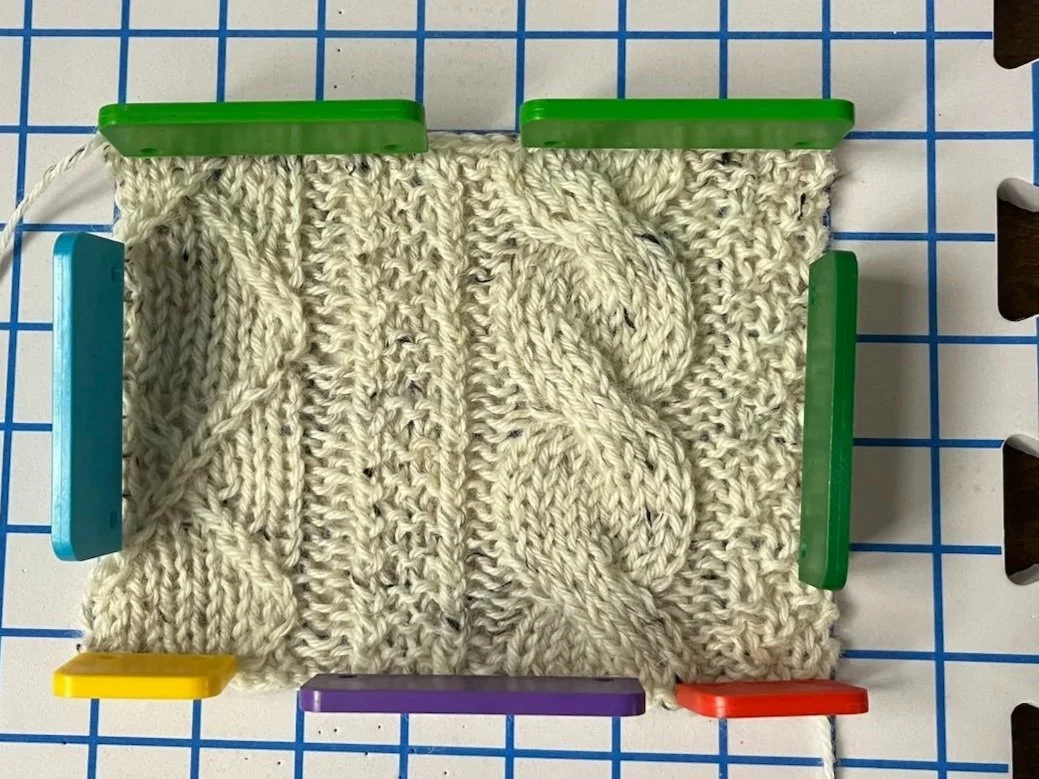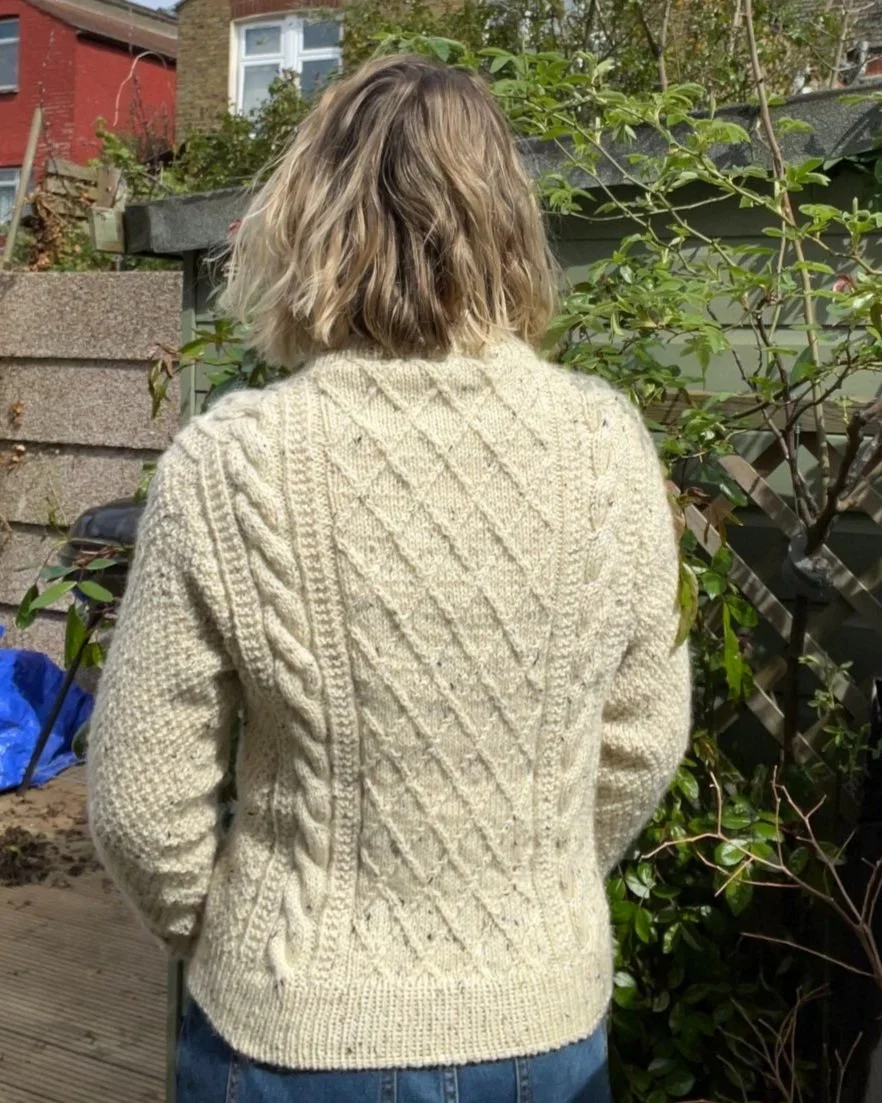Moby Sweater
As soon as I saw the Moby Sweater pattern from PetiteKnit last Autumn, I knew I had to make one but I thought it would be a long time before I had the knitting confidence to dive into it.
When visiting some friends in Oxford, I took the opportunity to go into the Oxford Yarn Store anything but anyone who has a fibre craft hobby will know that visiting a yarn store and spending no money just isn’t possible. I noticed they had hard copies available of all PetiteKnit’s patterns and I couldn’t resist picking up the Moby Sweater one. I had a vision of a natural white-ish yarn with tweedy flecks for this project and wasn’t keen to hold a mohair strand double with fingering weight for such a textured knit so asked the shop owner for some advice and she pointed me towards the Peer Gynt tweed in off-white which was exactly what I was hoping to find.
I did a gauge swatch that took about 3 hours to complete and after blocking it was quite a bit too large as I was knitting quite loosely by my usual standards.
Since doing the swatch for this project, I’ve read much more about the process of gauge swatching and realise that I’ve been approaching it wrong until now - I’ve previously tried to establish how loose I need to knit rather than assuming that my natural tension is constant and instead changing the needle size to hit gauge. Not knowing this at the time, I cast on to start the back yoke as directed in the pattern with a loose tension but by the time I was on the shoulders and front yoke, I was at my natural tension and the gauge was already uneven across the project.
By the time I realised that I should really redo the back yoke, I was way too far through to be bothered frogging literally the entire project so I kept going hoping that blocking would resolve my tension sins.
As I did for the Monday sweater, I worked the body until dividing for the sleeves then finished off the ball of yarn I was working with. Next, I picked up and worked the collar so it felt more like a sweater when I was doing try ons then joined the remainder of that yarn ball onto the body and worked it until it was finished - I then followed this same approach with each sleeve. I find this helps the body feel less like a slog as I’m doing a few rows in between each sleeve and then only have a fairly small amount remaining once the collar and sleeves are finished.
Once the sweater was complete, I did a quick try-on as I was desperate to see it on my body and I was curious how the fit would change with blocking.
Where the tension was much looser at the back neckline, the fabric was sitting weirdly and bunching up between my shoulders.
Happily, blocking did indeed resolve the tension differences as I blocked out the bottom to match the gauge at the back yoke and now I have a jumper that I love and am incredibly proud of. I honestly now feel like I could knit anything I set my mind to and I’m looking ahead to a future project where I’m going to try colour work for the first time!



